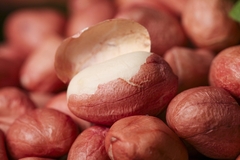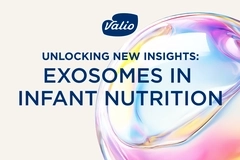Nutrient density in plant-based: Consumers look for nourishing and sustainable options, says industry
25 Aug 2021 --- As the plant-based market moves further into the mainstream, consumers are looking for the most nutritious plant-based NPD. Beyond sustainability and eco-consciousness, consumers are also looking for nourishing alternatives that cater to a holistic approach to health. Experts from ADM and Beneo speak to NutritionInsight on how the category is maturing and expanding further.
“Consumer demand for plant proteins is at an all-time high as many people experiment with plant-based options to meet their desire for healthy, nutritious, sustainable, clean label and novel products,” says Jacquelyn Schuh, ADM’s global protein marketing director.
As the plant-based market matures, consumers are seeking more ingredient diversity and increased nutrient density in plant-forward foods and beverages, she explains.
“The COVID-19 pandemic has helped create a shift amongst consumers toward a new holistic view on sustainability. According to recent research: ‘The old consumer paradigm of, ‘I choose to eat what is good for me and also good for the planet’ has now altered to a mindset of, ‘What is good for the planet is also good for me,’” says Olivier Chevalier, senior product manager functional proteins at Beneo.

“Coinciding with this, unsurprisingly, is a spotlight on health at present, with the majority of consumers saying that promoting long-term health is an important driver to them.”
 Consumers are seeking ingredient diversity and increased nutrient density in plant-based NPD.
Consumers are seeking ingredient diversity and increased nutrient density in plant-based NPD.
Swift shift to plant-based
ADM market research shows that the majority of global plant consumers – defined as flexitarians, vegetarians or vegans – believe taste and nutrition are equally important in plant-based products, reinforcing that brands must deliver on both of these characteristics.
“People are taking a more proactive approach to health and wellness because of the pandemic. In fact, global consumers say they are now more conscious about leading healthier lifestyles and are trying to eat and drink more healthily than they have in the past,” Schuh details.
These shifting behaviors create opportunities for innovation in protein blends and functional label claims on a variety of products.
Additionally, while greater accessibility to more nutritious alternative options pop up, the consistent consumer demand for clean, clear and shorter ingredient labels will not go away.
Long-term health and sustainability
Although plant-based products have seen rapid growth, primarily driven by health and eco-conscious shoppers, the pandemic widened the appeal of meat-alternative products even further, supports Chevalier.
“As more mainstream consumers make changes to their diets to promote their long-term health and reduce their impact on the planet, there has been a recent upsurge in shoppers planning to include more plant-based foods in their diets, as a result of COVID-19.”
Many consumers perceive plant proteins as natural, healthy ingredients that are more sustainable than meat in their production, he says.
“These proteins also have specific benefits such as being low in cholesterol, saturated fats and sugars, making them a popular choice for a growing range of plant-based applications.”
 Wheat is the top protein in meat substitutes, followed by soybean, pulses, pea and then potato.Although there are many sources of plant protein, wheat is the top protein in meat substitutes, followed by soybean, pulses, pea and then potato, he adds.
Wheat is the top protein in meat substitutes, followed by soybean, pulses, pea and then potato.Although there are many sources of plant protein, wheat is the top protein in meat substitutes, followed by soybean, pulses, pea and then potato, he adds.
Taste improvements
The popularity of wheat protein is, in part, due to its neutral taste and the wide variety of textures it can create. However, wheat protein is also an excellent source of many amino acids (such as cystéine, méthionine, phénylalanine, tyrosine and tryptophan).
“It is also recognized to be more neutral in taste than other protein sources, which is important, as taste is a key repeat purchasing driver for consumers. As such, wheat-based protein is one of the most promising meat substitutes for meat-free burgers, nuggets and vegetarian sausages to name but a few,” says Chevalier.
According to ADM research, more than 50 percent of flexitarian consumers say meat alternatives need taste improvements, and more than 20 percent say that texture needs to be improved.
“Given that, ADM is focused on enhancing the sensory experience of plant-based meat and dairy products. For example, we find that product developers are better able to achieve desired taste and texture by combining multiple plant proteins in foods and beverages,” Schuh notes.
 Beneo says plant-based demand is groing at an impressive rate, as more consumers seek to promote long-term health.
Beneo says plant-based demand is groing at an impressive rate, as more consumers seek to promote long-term health.
Protein blends
Finding the right protein ingredients and blends for specific offerings is crucial for innovation in the plant-based space.
“Brands can apply our NutriFlex lineup of protein systems to expand formulation possibilities and get on-trend and versatile products on shelves faster. NutriFlex spans easy-to-use, nutritionally fortified powdered plant protein blends to turnkey culinary-inspired protein-forward product solutions,” Schuh supports.
“By combining the two proteins, we help our customers provide high-quality protein and achieve authentic taste, color and texture for a wide range of superior plant-forward bakery and snack products.”
Protein blends can also help create creamy, higher protein beverage alternatives, such as our five-plant protein milk alternative, which is a purposeful blend of five ADM proteins designed to deliver balanced flavor and ingredient diversity.
“With the addition of Fibersol soluble corn fiber, the milk alternative also provides a boost of fiber and rich mouthfeel. Non-dairy beverages like this are a convenient, tasty solution for consumers seeking to add functional benefits through ingredients like fiber and protein to their diet.”
Juicy meat textures ADM research finds that more than 50 percent of flexitarian consumers say meat alternatives need taste improvements.Beneo originally launched a textured wheat protein ingredient called BeneoPro W-Tex, to meet the growing demand for meat-alternative solutions.
ADM research finds that more than 50 percent of flexitarian consumers say meat alternatives need taste improvements.Beneo originally launched a textured wheat protein ingredient called BeneoPro W-Tex, to meet the growing demand for meat-alternative solutions.
“This has proved popular with producers as it contains at least 65 percent protein (on the dry matter) and has a unique alveolar structure that allows the development of meat-like juicy texture,” claims Chevalier.
“It also takes only five to 15 minutes to hydrate, eradicating the need for long soaking and making it convenient for production. As well as enabling the creation of meat-free products with a meaty texture and granular, fibrous structure, BeneoPro W-Tex can also be flavored with a variety of tastes, herbs and spices, making it a flexible meat substitute.”
However, as the consumer palate for plant-based foods continues to evolve, a wider variety of meat alternative foods are now being created.
Versatility in formulations
“To meet growing demand, producers want even more versatility when it comes to fine-tuning their plant-based product’s organoleptic profile [its taste, sight, smell and touch] and its texture.”
To facilitate this process, Beneo created BeneoPro W-Tex variants that deliver, both in terms of taste and texture, no matter the plant-based food application.
“For minced beef meat replacement recipes, the company created two prototype BeneoPro W-Tex variants.”
“BeneoPro W-Tex’s existing formulation has been recreated in a smaller particle size of average 5 mm, instead of the standard 7 mm, for producers looking for finer textures in ground meat replacement products, as well as plant-based sausages.”
For those producers looking to replace the texture of chicken, in imitation chicken nuggets or strips, a variant has been created that has a slightly lower protein content of a minimum 60 percent (on dry matter). It has a higher water holding capacity and as a consequence, creates softer, juicier and more “chicken-like” textures.
“With demand for plant-based products growing at an impressive rate, as more and more consumers look to promote their long-term health and make sustainable purchasing choices, there is a wealth of opportunity for producers looking to capitalize on the trend,” Chevalier concludes.
By Kristiana Lalou
















